توضیحات
ABSTRACT
This paper presents an enhanced control strategy for Wind Energy Conversion System (WECS) using Doubly-Fed Induction Generator (DFIG). A robust Super-Twisting (STW) sliding mode control for variable speed wind turbine is developed to produce the optimal aerodynamic torque and improve the dynamic performance of the WECS. The electromagnetic torque of the DFIG is directly tracked using the proposed control to achieve maximum power extraction. The performance and the effectiveness of the STW control strategy are compared to conventional Sliding Mode (SM) and Proportional-Integral (PI) controllers. The proposed STW algorithm shows interesting features in terms of chattering reduction, finite convergence time and robustness against parameters variations and system disturbances.
INTRODUCTION
Over the last decade, wind energy has taken an increasingly important place in the field of electric energy generation. This kind of energy source is developed due to the global growing of electricity demand and the trend towards renewable and non-polluting energy sources in the world . Indeed, in wind energy conversion system (WECS), the maximum wind power could be extracted when the tip-speed-ratio of the turbine is maintained at its optimum value for different wind speed patterns . Thus, it is necessary to develop more advanced control strategies for WECS. To this end, several control methods have been designed and implemented for wind energy generation such as, vector control which is based on voltage and flux oriented vector using the d-q rotating frame to decouple the active and reactive power, , . In fact, this strategy is sensible to parameters variations of the system such as resistance and inductance variations. To overcome this problem, direct torque ontrol (DTC) has been introduced by to directly control generator torque and stator flux using a predefined lookup table based on the estimation of the stator flux and electromagnetic torque. Direct power control (DPC) proposed in , has used the same concept of the DTC method. DPC control strategy is based on decoupling and direct control of reactive and active power . In fact, the non- linear behaviors of mechanical and electrical parts of WECS as well as variations of electromechanical parameters represent crucial problems . In addition, wind turbine (WT) works under high wind speed variations, which makes its control a serious challenge.
چکیده
این مقاله یک استراتژی کنترل پیشرفته برای سیستم تبدیل انرژی باد (WECS) با استفاده از ژنراتور القایی بطور فشرده (DFIG) را ارائه می دهد. یک کنترل حالت کشویی Super-Twisting (STW) قوی برای توربین بادی متغیر سرعت برای تولید گشتاور آیرودینامیکی مطلوب و بهبود عملکرد دینامیکی WECS توسعه یافته است. گشتاور الکترومغناطیسی DFIG به طور مستقیم با استفاده از کنترل پیشنهادی برای دستیابی به حداکثر قدرت استخراج ردیابی می شود. عملکرد و اثربخشی استراتژی کنترل STW با کنترل های معمولی کشویی (SM) و Proportional-Integral (PI) مقایسه می شود. الگوریتم STW پیشنهاد شده ویژگی های جالب را از لحاظ کاهش تقارن، زمان همگرایی محدود و استحکام در برابر تغییرات پارامترها و اختلالات سیستم نشان می دهد.
مقدمه
در طول دهه گذشته، انرژی باد، جایگاه فزاینده ای در زمینه تولید انرژی الکتریکی را به خود اختصاص داده است. این نوع منبع انرژی به دلیل رشد جهانی تقاضای برق و روند تولید انرژی های تجدید پذیر و غیر آلاینده در جهان توسعه یافته است. در واقع، در سیستم تبدیل انرژی باد (WECS)، حداکثر قدرت باد می تواند استخراج شود، هنگامی که نسبت tip-speed توربین در مقدار مطلوب آن برای الگوهای مختلف سرعت باد نگهداری می شود. بنابراین، لازم است که راهبردهای پیشرفته تر کنترل برای WECS را توسعه دهیم. برای این منظور، چندین روش کنترل شده برای تولید انرژی باد، مانند کنترل بردار بر پایه ولتاژ و بردار جریان شتاب با استفاده از فریم چرخشی d-q برای جدا کردن قدرت فعال و راکتیو، طراحی و اجرا شده است. در واقع، این استراتژی برای تغییرات پارامترهای سیستم مانند تغییرات مقاومت و نوسانات حساس است. برای غلبه بر این مشکل، کنترل مستقیم گشتاور مستقیم (DTC) با کنترل مستقیم گشتاور ژنراتور و جریان استاتور با استفاده از یک جدول جستجوی پیش تعریف شده براساس برآورد شار استاتور و گشتاور الکترومغناطیسی معرفی شده است. کنترل مستقیم قدرت (DPC) پیشنهاد شده از همان مفهوم روش DTC استفاده کرده است. استراتژی کنترل DPC مبتنی بر جداسازی و کنترل مستقیم قدرت واکنش پذیر و فعال است. در واقع رفتارهای غیر خطی قطعات مکانیکی و الکتریکی WECS و همچنین تغییرات پارامترهای الکترومکانیکی مشکلات اساسی را نشان می دهند. علاوه بر این، توربین بادی (WT) با تغییرات سرعت باد بالا کار می کند، که کنترل آن را یک چالش جدی می کند.
Year: 2018
Publisher : SPRINGER
By : Jyotheeswara Reddy K., Sudhakar Natarajan
File Information: English Language/ 12 Page / size: 937 KB
سال : 1397
ناشر : SPRINGER
کاری از : Jyotheeswara Reddy K.، Sudhakar Natarajan
اطلاعات فایل : زبان انگلیسی / 12 صفحه / حجم : KB 937


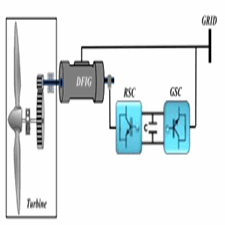

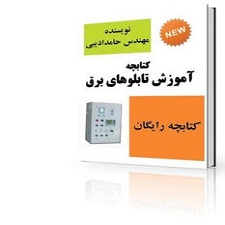

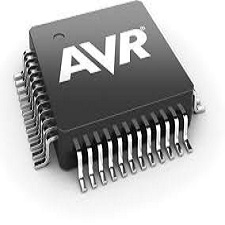

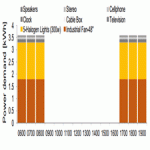
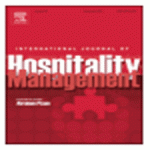
نقد و بررسیها
هنوز بررسیای ثبت نشده است.